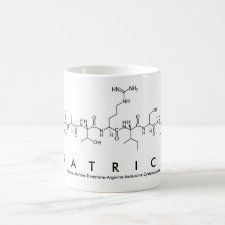
Authors: Nguy TP, Van Phi T, Tram DTN, Eersels K, Wagner P, Lien TTN
Article Title: Development of an impedimetric sensor for the label-free detection of the amino acid sarcosine with molecularly imprinted polymer receptors.
Publication date: 2017
Journal: Sensors and Actuators B: Chemical
Volume: 246
Page numbers: 461-470.
DOI: 10.1016/j.snb.2017.02.101
Alternative URL: http://www.sciencedirect.com/science/article/pii/S0925400517303283
Abstract: In this article we report on the development and optimization of a biomimetic sensor for the label-free detection of the amino acid sarcosine, a molecule which is seen as a biomarker for prostate cancer. The recognition elements were sarcosine-imprinted poly-aminothiophenol (p-ATP) layers deposited by electro-polymerization onto screen-printed gold electrodes and, for comparison, onto carbon electrodes covered first with a gold-nanoparticles interlayer. Using the latter type of electrodes, we reached a detection limit below 1 nM in aqueous buffer solutions with an accessible concentration range from the nano- to the micromolar scale. This was achieved by a careful thickness optimization of the Au-nanoparticle and the p-ATP layers in combination with Faradaic impedance spectroscopy as a readout method. The sensor showed an excellent reproducibility, a good stability with time, and a surprisingly low cross-selectivity towards other proteins
Template and target information: sarcosine
Author keywords: Molecularly imprinted polymers, gold nanoparticles, Faradaic electro-chemical Impedance spectroscopy EIS, Sarcosine, prostate cancer



Join the Society for Molecular Imprinting

New items RSS feed
Sign-up for e-mail updates:
Choose between receiving an occasional newsletter or more frequent e-mail alerts.
Click here to go to the sign-up page.
Is your name elemental or peptidic? Enter your name and find out by clicking either of the buttons below!
Other products you may like:
 MIPdatabase
MIPdatabase









